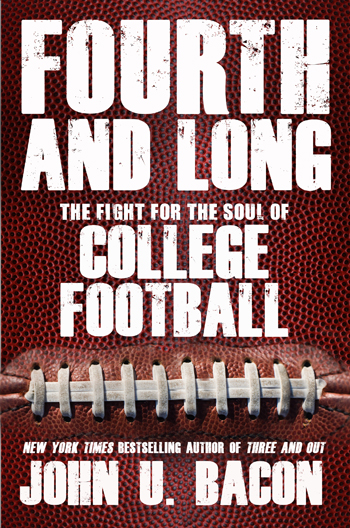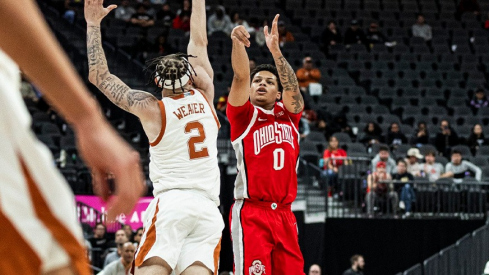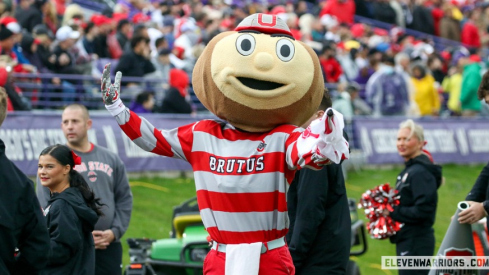For the millions of fans who celebrate the game-day heroics of the student athletes that give college football its heart and soul, bestselling author John U. Bacon’s Fourth and Long, a warts-and-all look at the present and future of the game, gives them reason to still believe.
In 2012-13, college football’s possible futures were clearly on display as the Big Ten, the nation’s oldest and most popular league, struggled through a season extraordinary for what it portends for the game. Granted unprecedented access to four programs—Penn State, Ohio State, Michigan, and Northwestern—Bacon saw up close how money, influence, and power haunt the league. And Bacon discovered that all four teams—buffeted by NCAA sanctions, scandal, fading rivalries, and the wide and narrow vision of coaches and athletic directors—are responding differently.
He’s also discovered something surprising. Expressed at tailgates in South Bend, the locker room in Happy Valley, the sidelines and bleachers of Ohio Stadium, among Michigan's marching band alums on homecoming weekend, and everywhere college football fans gather in their thousands, winning isn't everything. How a team wins matters, and that's measured in the guts and loyalty of the student athletes who, against incredible odds, fight for the traditions, passions, and ideals that have always defined what we most admire about college football.
URBAN’S STORY – CHAPTER THREE
If Bill O’Brien was walking into the Happy Valley swamp largely blind, Urban Meyer had a much better map of the landscape he’d be navigating in Columbus.
After all, the man had been born in Toledo in 1964 and raised in Ashtabula, a town of about twenty thousand people, known mainly as a throwaway line in Bob Dylan’s classic “You’re Gonna Make Me Lonesome When You Go.”
Kids grow up tough in Ashtabula, a shrinking coal port in the northeast corner of the state, but Meyer probably grew up tougher than most. His grandfather had been killed in a German concentration camp, and after the war, his mother, Gisele, ended up on the wrong side of the East-West divide. Not content to die in East Germany, she crawled underneath a barbed-wire fence to escape, lived in a West German basement for three months, then took a ship to New York.
“Germans at the time thought the US was all palm trees and sunshine and smiles,” Urban told me. “But when her ship arrived, the New York City sanitation workers were on strike. Her first three weeks in America she spent walking past mountains of garbage and avoiding rats the size of Volkswagens.”
Although most Europeans find American football mystifying, Gisele Meyer loved it. Being Catholic, she naturally cheered for Notre Dame and dreamed her son would one day become the Fighting Irish’s head coach. Her son loved the game even more, but Notre Dame less. In Ashtabula, if you wanted to fit in, there was one thing you had to do, but only one thing: back the Buckeyes.
Meyer didn’t need to be told. When he was just five or six, he recalled, his mom dragged him out of the house to run an errand during the Michigan–Ohio State game—at the outset of the Ten Year War between Woody Hayes and Bo Schembechler.
“I couldn’t believe we were leaving the house. We had to go to some outside mall, and when I heard the PA system playing the game, I just stopped, cold.” Meyer was mesmerized, and even his tough, Teutonic mom had a hell of a time getting her young son to move.
Meyer played almost every play at Saint John High School, on both sides of the ball, but after he failed to get Earle Bruce’s attention at Ohio State, he played two seasons of professional baseball before accepting the University of Cincinnati’s offer to play defensive back. When his college career was over, he knew he didn’t want to leave the game, but he also knew he couldn’t stay as a player.
Coach Bruce came to the rescue, hiring Meyer as a graduate assistant at Ohio State.
“What I admire most about Coach Bruce is what the fans of That School Up North love about Bo: he’s always honest and direct. Those two were very much alike.
“This kind of world is hard. And the whole idea of following all these rules—not everyone does it. But there was never a time when Coach Bruce said, ‘Let’s find a way around something.’
“There’s nothing like having a conversation with someone who has the guts to say things people don’t like. ‘This is the way it is.’ It’s rare, and Earle has it. The honesty, the toughness—that’s the only way you can operate. And sometimes you get criticized for it. At the end of the day, you can’t please everyone.”
When Bruce was fired by Ohio State, then later hired by Colorado State, Meyer eagerly followed. Bruce taught him more than plays. “He always said the two groups most overlooked were the former players and the students.” Bruce worked hard to keep both groups appreciated and involved.
Even while Meyer became the head coach at Bowling Green in 2001, then Utah in 2003 and Florida in 2005, his connection with Coach Bruce only grew stronger. He continued to call his mentor almost every week, about everything from discipline issues, to hiring questions, to scheduling.
“I like to get his opinion on how we’re doing things,” he said. “He knows me as well as I know me. If I’m overreacting, or struggling with the balancing act that’s so hard to achieve, he’ll say something.”
After Ohio State hired Meyer on November 28, 2011, between their loss to Michigan and their loss to Florida in the Gator Bowl, Meyer didn’t waste any time putting his stamp on the program. When Meyer walked into his first team meeting that day, he did not start with the usual pleasantries— hello, thanks, great to be here. He told them all to sit up straight in their seats, then pointed out those who weren’t sitting straight enough.
“He grabs your attention right away,” 2012 captain Zach Boren told me. “That first meeting was intense. Intense. But that’s something we needed. We’d gotten complacent around here. He was all serious, all business.”
Of the four coaches featured here, if you wanted to go get a beer, Meyer might be the fourth one you’d pick. They all have deeply competitive personalities, but Meyer is wired just a little tighter than the rest. But he did not come to Columbus to have a beer with you. He came to run the table—and his yearlong campaign started that day.
Buckeye fans bristle when Michigan head coach Brady Hoke refers to Ohio State as Ohio—which is the name of the state, or an entirely different state university, located in Athens. Likewise, Michigan fans roll their eyes at the Buckeyes’ recent custom of referring to their school as The Ohio State University. This would suggest the university was the state’s first, though Miami University in Oxford was founded in 1809, sixty-one years before Ohio Agricultural and Mechanical College was born in 1870 and later became Ohio State. It would suggest Ohio State was the best school in the state, but for years Miami was much harder to get into, while great liberal arts colleges such as Oberlin, Wooster, Kenyon, and Denison have been highly rated for a century—not to mention Case Western.
The Ohio State University? More like an Ohio State University.
Just a generation ago, if you had earned a diploma from any high school in the state of Ohio, you were automatically, by law, granted admission to Ohio State—hardly the foundation for competitive excellence.
But Ohio State’s reputation has been rising, and rapidly.
“Over the past two decades,” former Michigan president James Duderstadt told me, “Ohio State has invested heavily in its academic programs and today ranks as one of the nation’s leading research universities. They have become very competitive in attracting outstanding faculty and students.”
“Ten or fifteen years ago,” said Michigan professor John Hagen, who has served on many national panels in his forty-five-year career, “you wouldn’t even list Ohio State in the top three or four in the Big Ten academically, but they did a big fund-raising campaign a few years ago, and they’re doing another one now, so they can offer higher salaries and get some more of our star faculty. They’re not just competing with us in athletics anymore.”
If you grew up in Ann Arbor in the seventies, as I did, the most hated man in your universe was not Leonid Brezhnev, but Woody Hayes. A close second, however, was one Archie Griffin, who not only was the only two-time Heisman Trophy winner, he was a certified Wolverine killer. He faced four of Schembechler’s best teams, all ranked third or fourth in the country, three of them undefeated, and walked away with three wins and a tie—which were the first four Michigan–Ohio State games I watched.
If you want to really ruin your day, talk to Mr. Griffin for an hour and discover he is the epitome of all that is right about college football.
It is enough to make a Michigan man want to throw up.
Archie Griffin grew up, as they like to say, in the shadow of the Horseshoe, the fourth of eight kids, seven of them sons—all of whom played serious football. In the Buckeye State, that means everything. On Friday nights, the entire town empties into the local stadium. That included Archie’s father, James Griffin.
“He would always be there,” Archie recalled. “That might not sound like anything to you, but he worked three jobs: at Ohio Malleable, a steel casting company; another for the City of Columbus; and a janitorial service. He worked days, and he worked nights. That had to be awfully hard.”
To see his kids play Friday nights, James Griffin would take his vacation time. “That was his vacation,” Griffin said. “To watch his kids play football Friday nights. He loved doing that. When I think of him, that’s what I think of first. And every time I say that, it gets me choked up.”
This time was no exception. To maintain his composure, the impossibly energetic Griffin had to pause and look out the window on the Olentangy River rolling outside his office.
It will come as a shock to most football fans that Griffin visited Michigan and seriously considered going there. But he went to Ohio State, partly for his father, but also for the man in the baseball hat, the short- sleeve shirt, and the black tie: Wayne Woodrow Hayes.
“I loved the man. I think about him every day—and I mean that. Not a day goes by that I don’t think about Woody Hayes. Something he would have said, in the course of the day, comes back into my mind.
“The biggest thing he talked about in meetings, year after year after year, was paying it forward. Paying it forward. You’ve been blessed, so you need to give back and give the next generation a chance.”
Naturally, that list includes number 45 himself. Griffin and his wife, Bonita, founded the Archie Griffin Fund and have endowed six scholarships at Ohio State, and not in football or basketball, but in the Olympic sports.
But Griffin’s greatest gift for his alma mater is his career itself—the one after football. In the state of Ohio, his name probably runs second only to his old coach’s. Griffin could have made himself a wealthy man quite easily through sales, public relations work, even TV and radio, to name just a few pursuits. Instead, he returned to his alma mater in March 1984 to work in the athletic department, then left his comfort zone in 2004 to lead the alumni association, which now has a half million dues-paying members, thanks to his leadership.
“Now that I’m fifty-eight, I love my football, I love my Buckeyes, but I love this university as well, and what it can do for the people of the state of Ohio. For me, it’s vastly more important. But I know without football, we wouldn’t be this big, or this powerful. It’s the drawing point.
“The president of the university can’t draw that. The president of the United States can’t draw that! It’s like Bear Bryant said: ‘You can’t rally around a math class.’
“When you think about it, it’s true—but getting people on campus actually helps the math class. And football does that! When people get drawn in, they can see what this place is all about.
“You get less support from the state now, so you need donors—and that’s where football helps, too. That’s why so many people know who we are, and what we do here.
“I’m not going to say all five hundred thousand alums are huge football fans, but I’ve gotta tell you, it’s a big point of interest! We have alumni who are very proud of Ohio State, and we hear about it—especially when things are not going well! The tattoo issue. When something like that happens, you see how passionate they are. And they want it fixed! But it really shows you that they care.”
When I visited Griffin in 2012, some 211,000 alums had already shown they cared by raising $1.5 billion of a $2.5 billion campaign, “But for Ohio State,” to benefit the university’s fourteen colleges, which have rapidly been climbing the national and even world rankings the past decade.
“They’re still not Michigan,” Professor Hagen said, “but now they’re certainly right up there.”
And that’s true top to bottom. A friend of mine had little trouble getting in some two decades ago, but was surprised to learn from the admissions department in 2013 that her out-of-state daughter would need a 3.6 GPA and a 28 ACT just to be considered.
In its most recent ranking, U.S. News & World Report named Ohio State the eighteenth-best public university in the country. Thirteen of Ohio State’s graduate programs ranked in the top ten, and the university itself earned the title of best public university in the state.
Given all this, you just might have to concede that, by 2012, the state school in Columbus had, in fact, become The Ohio State University.
Curse that Archie Griffin, anyhow.
Such academic ambitions, naturally, did nothing to lower the temperature of the seat Urban Meyer found himself sitting on. If anything, the university’s growing stature and confidence—and the football program’s central role in sparking it—only put more pressure on Meyer’s new position.
The legions of Ohio natives who have bolted north to Ann Arbor include Heisman Trophy winners Desmond Howard and Charles Woodson, plus dozens of All-Americans. But Craig Krenzel is one of the few native Michiganders who chose to play for Ohio State, and he did so in memorable style, quarterbacking the Buckeyes to their first win in Ann Arbor in fourteen years, breaking a streak that dated back to Earle Bruce’s last game in 1987. Then he led Ohio State to the 2002 national title, its first since Woody Hayes’s 1968 team. Along the way, Krenzel earned a 3.75 GPA in molecular genetics.
He decided to leave the premed path for business and now provides commentary for 97.1 The Fan in Columbus, alongside Mike Ricordati.
“Is coaching Ohio State the biggest pressure cooker in the country?” Krenzel asked. “It’s up there. But that all depends on how you perceive pressure, and where it comes from.
“When you play at Ohio State, the fans don’t expect more from you than you do. Those are the kinds of players this place attracts, and if you don’t have that mentality, you don’t last very long here. If you have that mentality, it’s a pressure-packed situation, no doubt, but it’s pressure packed because you’re a perfectionist.
“What I just described is exactly how Urban Meyer is wired. He is as intense as it gets. I look at how he coaches, his expectations, his transparency, and I think it’s a breath of fresh air in this age. Recruits are usually sugarcoated and schmoozed, but he just says, ‘You’ll earn everything you get. I’ll make you a better football player—but you’re gonna earn it.’
“Nobody expects more out of him than he does. The man is a perfectionist.”
At Ohio State, in the wake of NCAA sanctions and a 6-7 season, Meyer only ratcheted up his perfectionist tendencies, seeking not only to run the table, but to do so with high graduation rates and little drama. To do what Tressel did, in other words, minus the headlines and headaches.
Meyer already knew the price he could pay for his perfectionism: his family and his health. But instead of backing off, he just added two more goals to the list: more time with his family, and more sanity at season’s end.
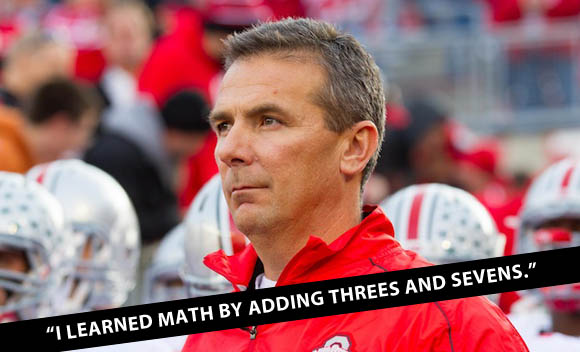
“I’ve always had a great fear of being that old guy who says, ‘I missed out,’” he told me. He was not talking about failing to win a Big Ten banner at the school he grew up cheering for, or suffering a near miss for his third national title. He was talking about his family.
The previous generation of coaches—Woody, Bo, and Bear’s—made no apologies for being utterly consumed by the endless duties of their jobs, which they expressed regret over only after they retired. But this generation—squarely including Pat Fitzgerald, Brady Hoke, and Bill O’Brien, who are all committed husbands and fathers—is determined to do it differently. Yes, the job is still consuming, but they stubbornly insist on protecting time with their wives and kids.
At midcareer and midlife, Meyer was attempting to join his peers in being a full-fledged father. He credits Bob Stoops, the Oklahoma coach, for being the first to say, “‘I’m going to take my kids to school.’ In this business, you usually get chastised for that. Legendary coaches never did things like that.” Because of Stoops, and those who followed in his footsteps, Meyer said, “It’s starting to change.”
It is now common for these coaches to invite their families to practices, team dinners, and other functions that were strictly off-limits in the old days, and Meyer planned to take advantage of the new norms to avoid sacrificing his family life during the madness of a Big Ten season.
Meyer knew none of those goals would be easily achieved, especially given his starting point on each front.
To the Buckeye faithful, however, it all looked like a no-brainer: plug in a high-powered coach to a high-powered program, and national titles will surely follow. Meyer knew it wasn’t that simple—witness the quick divorce between Michigan and Rich Rodriguez just eleven months earlier.
And Meyer knew something the fans didn’t: when summer practice began, unlike Fitzgerald, Hoke, and even O’Brien, Urban Meyer still didn’t have his team.
“The kids wouldn’t let us coach them,” he told me. “There was push- back.”
Hardworking senior co-captain Zach Boren “was actually one of the biggest offenders. He was always asking, ‘Why are we doing this? We didn’t do it this way before! We won games and went to the Rose Bowl!’
“Whenever you take over a new program,” Meyer said, “there’s going to be pushback. But this was getting old.”
Going into the 2012 season, Meyer had plenty on his plate, by any standard: expectations of a perfect season, a cleaned-up program, a high graduation rate, and a historic, university-wide fund-raising campaign, plus his own hopes of maintaining a healthy, happy family life.
But he would be unlikely to achieve any of those goals if he didn’t win the hearts and minds of the men wearing the gray helmets.
When fall camp started, he still hadn’t.
Bonus quotes from Fourth and Long: The Fight for the Soul of College Football.
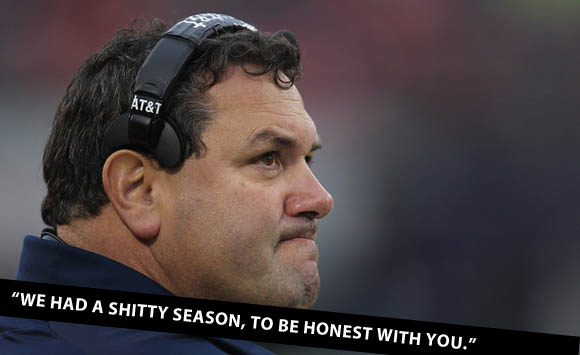
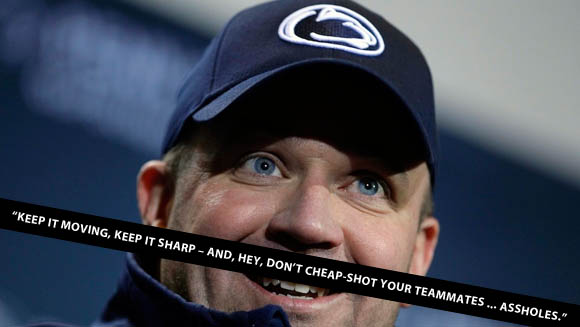
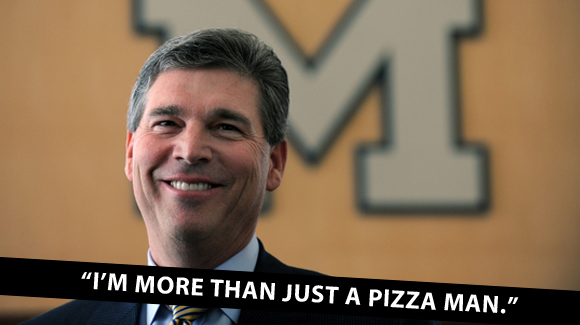
Excerpted by permission from Fourth and Long: The Fight for the Soul of College Football by John U. Bacon. Copyright (c) 2013 by John U. Bacon. Published by Simon & Schuster. All rights reserved. No part of this excerpt may be reproduced or reprinted without permission in writing from the publisher. Available for purchase from Amazon and other retailers. You can follow John U. Bacon on Twitter: @Johnubacon.
